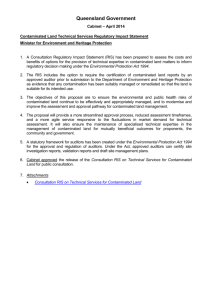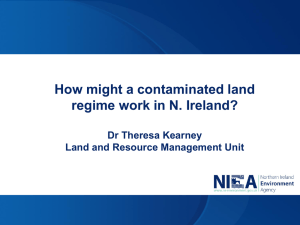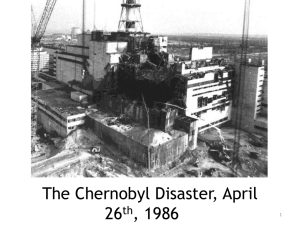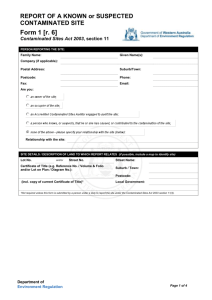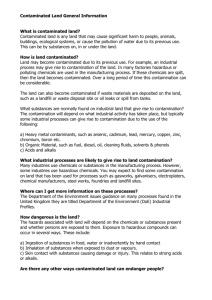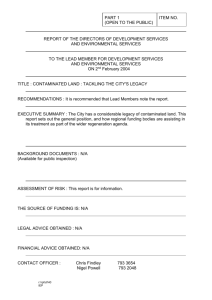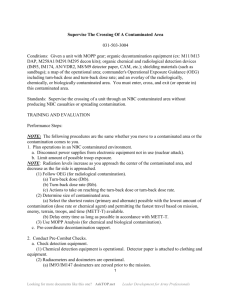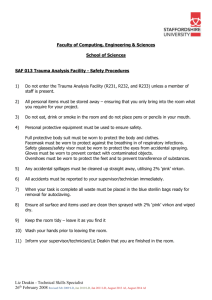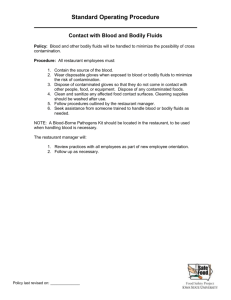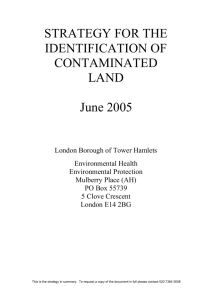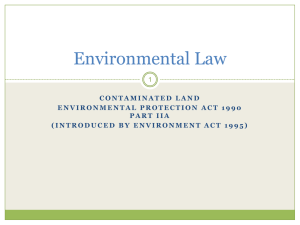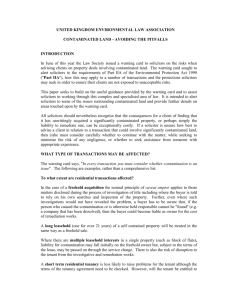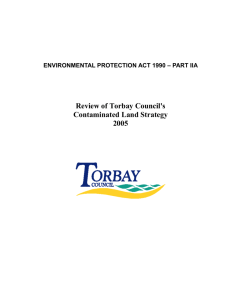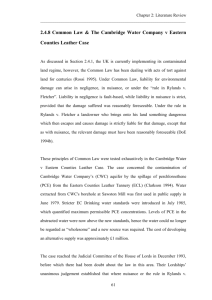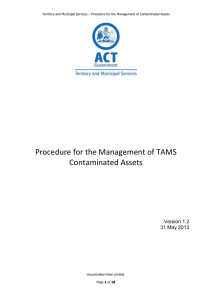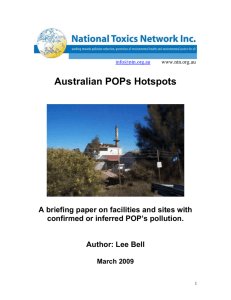Contaminated Land - West Berkshire Council
advertisement
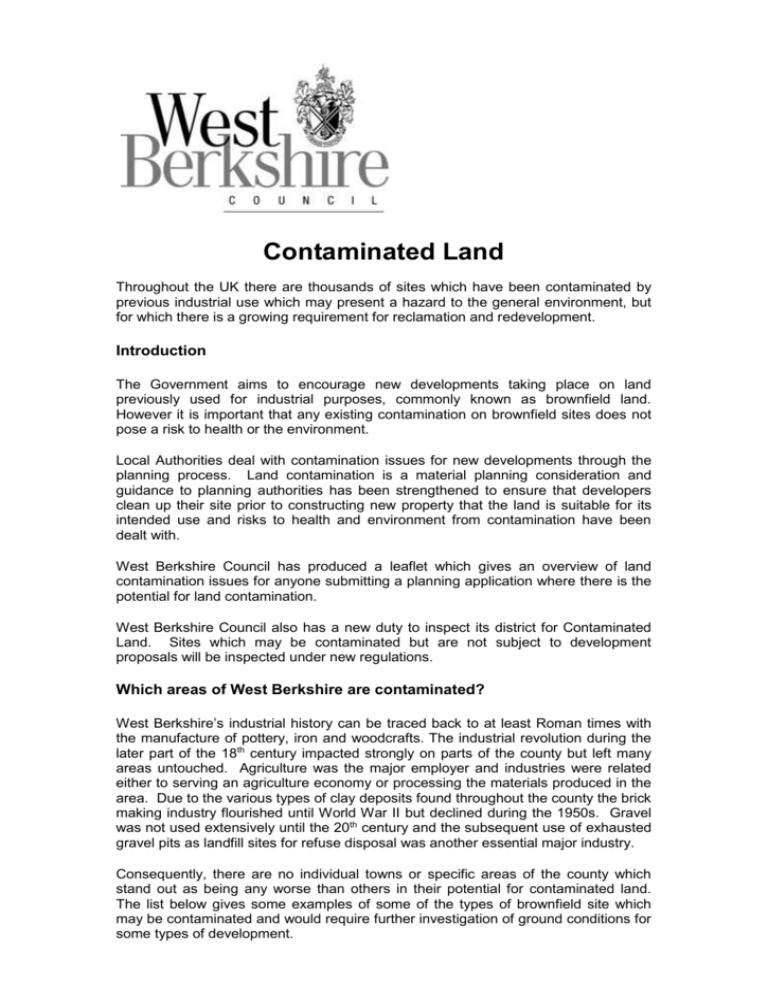
Contaminated Land Throughout the UK there are thousands of sites which have been contaminated by previous industrial use which may present a hazard to the general environment, but for which there is a growing requirement for reclamation and redevelopment. Introduction The Government aims to encourage new developments taking place on land previously used for industrial purposes, commonly known as brownfield land. However it is important that any existing contamination on brownfield sites does not pose a risk to health or the environment. Local Authorities deal with contamination issues for new developments through the planning process. Land contamination is a material planning consideration and guidance to planning authorities has been strengthened to ensure that developers clean up their site prior to constructing new property that the land is suitable for its intended use and risks to health and environment from contamination have been dealt with. West Berkshire Council has produced a leaflet which gives an overview of land contamination issues for anyone submitting a planning application where there is the potential for land contamination. West Berkshire Council also has a new duty to inspect its district for Contaminated Land. Sites which may be contaminated but are not subject to development proposals will be inspected under new regulations. Which areas of West Berkshire are contaminated? West Berkshire’s industrial history can be traced back to at least Roman times with the manufacture of pottery, iron and woodcrafts. The industrial revolution during the later part of the 18th century impacted strongly on parts of the county but left many areas untouched. Agriculture was the major employer and industries were related either to serving an agriculture economy or processing the materials produced in the area. Due to the various types of clay deposits found throughout the county the brick making industry flourished until World War II but declined during the 1950s. Gravel was not used extensively until the 20th century and the subsequent use of exhausted gravel pits as landfill sites for refuse disposal was another essential major industry. Consequently, there are no individual towns or specific areas of the county which stand out as being any worse than others in their potential for contaminated land. The list below gives some examples of some of the types of brownfield site which may be contaminated and would require further investigation of ground conditions for some types of development. How can I find out if my site is contaminated? Public Registers and Environmental Information The public register of contaminated land held by West Berkshire Council contains only those sites which fulfil the statutory definition of being contaminated and for which a clean up notice called a Remediation Notice has been served. Some land uses which may have caused land to be contaminated include: (not an exhaustive list) Asbestos manufacturing Cement works Chemical works Dry cleaners Engineering works Garages/vehicle repair Gas works Metal manufacturing Petrol Stations Printworks Railway land Sewage works Textile works Timber products manufacture Waste disposal West Berkshire Council does not (and is not required to) have a register of land which may be contaminated, land which has pollutants on it or which has had a past industrial usage. However the Council can supply an environmental information report for a site, including matters such as past industrial usages of the site, prescribed processes, landfill sites nearby and water resources. A charge is made for producing these reports to cover Officer time. There are also a number of other companies which can provide environmental screening reports. Having obtained information indicating a possible contamination problem, the next step is to commission an Environmental Consultant to investigate the site for you. Unfortunately the Council cannot recommend a consultant to you, however the Ends Consultants Directory is a good place to start (see links on main page) or try to get advice or recommendations from others in a similar position. Inspection of West Berkshire by the Council The Authority has a duty to inspect the area to identify land which, in its current use, falls within the definition of Contaminated Land under Part IIA of the Environmental Protection Act 1990. ‘Contaminated Land’ is legally defined as “Land which appears to the Local Authority to be in such a condition, by reason of substances in, on, or under the land, that significant harm is being caused, or there is a significant possibility of such harm being caused; or pollution of controlled waters is being, or is likely to be caused.” The Contaminated Land Strategy for West Berkshire Council sets out how the Council will inspect its area for potentially contaminated land. The Council would then identify persons responsible for the contamination and make sure it is remediated. The law follows the ‘polluter pays’ principle – the person or organisation that caused or permitted the contamination must pay to have it put right. If that person or organisation is not known or cannot be found, then the current owner of the land may become responsible. The UK Government has adopted a ‘suitable for use’ approach, whereby Contaminated Land in the legal sense must have at least one ‘pollutant linkage’ on the site. This comprises a pollutant source, a receptor (ie a person that could be affected by the pollution) and a physical pathway connecting the two. The statutory guidance sets down what receptors are included and the types of harm that may occur to them through contamination. It is important to understand that even if a site has pollutants on it, it is not automatically ‘Contaminated Land’ in the statutory sense. Past industrial use of a site does not mean that it is necessarily contaminated land, it is merely an indicator that more investigation of the site is required. Whilst the inspection of the area is ongoing, the Authority is unable to comment as to whether a particular property is likely to be statutorily contaminated or not. The inspection of the district will be a lengthy process and the Council’s resources will be concentrated on locating and investigating the most pressing and serious problems first. Where can I find more information on Contaminated Land? Both the DEFRA and Environment Agency websites have lists of publications and guidance related to Contaminated Land. See the links on the main page. Or contact public protection at the links given on the main page.

